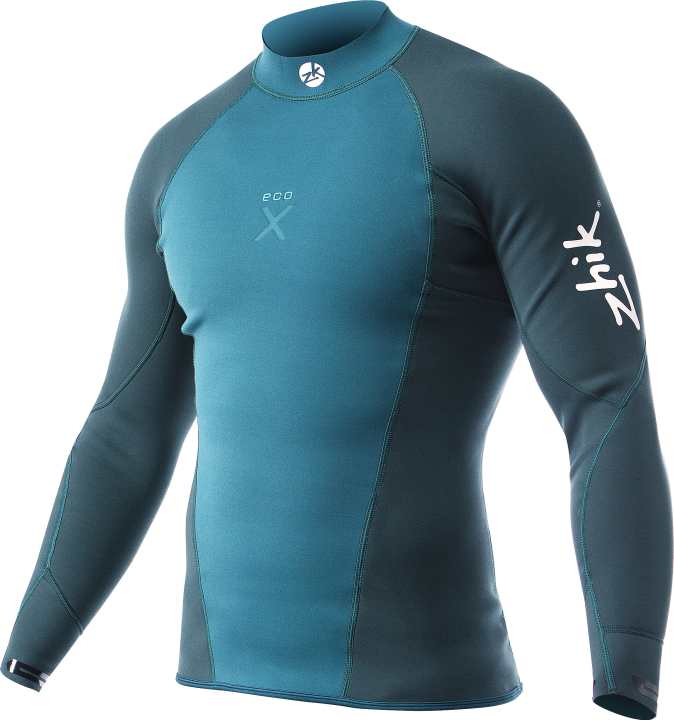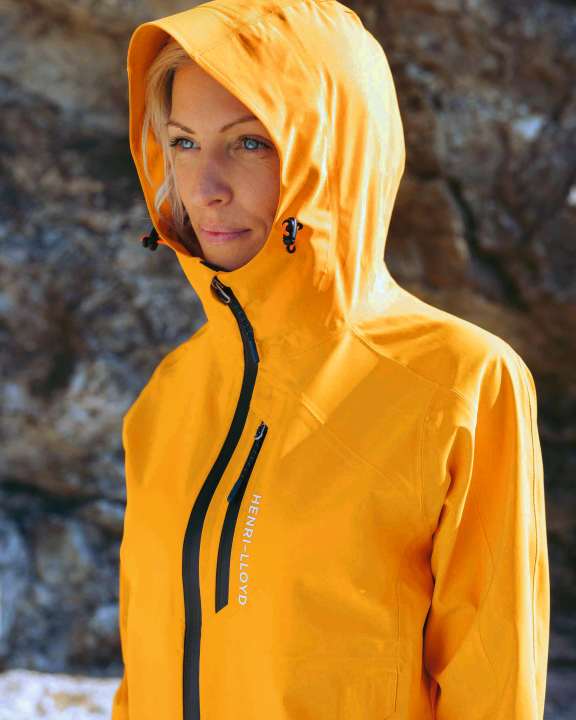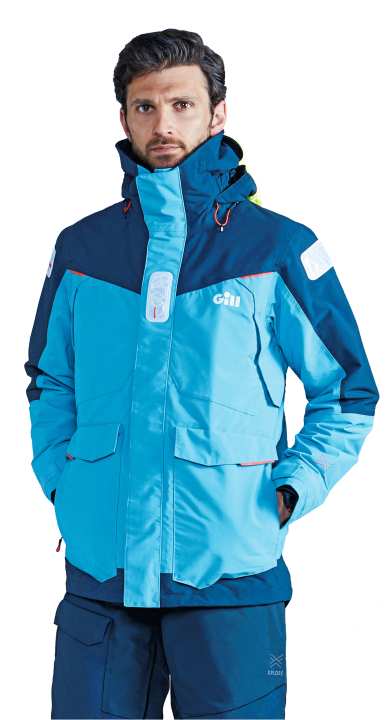Sustainable functional clothing: More and more oilskins made from recycled material

The long Ascension weekend promises to be windy and rainy. For all crews who are nevertheless drawn to the water, oilskins are the most important piece of equipment. The crucial task of the jacket and trousers combination is to keep the wearer dry and warm. Good freedom of movement is also desirable, and a few usable pockets should not be missing. However, another factor is becoming increasingly important: the material should not be too harmful to the environment.
This desire is only to be welcomed in view of increasingly frequent extreme weather events, melting glaciers and rising sea levels, and there are now some manufacturers who are doing just that. Recycled fibres from water bottles, fishing nets collected on the beach and other waste are increasingly finding their way into functional clothing for water sports enthusiasts.

With Musto and Zhik, the Munich-based company Frisch has two brands in its programme that already rely in part on sustainable materials. Zhik offers a wetsuit made from 80 per cent natural rubber and outer material made from recycled PET bottles as part of its Eco series. Musto has so far favoured the OSM strategy for hoodies from the Evolution series. The abbreviation stands for One Single Material and means that garments are not made from a mix of different materials and should therefore be easy to recycle. According to Moritz Freiesleben fromFrisch, this type of production is to be expanded even further in the future. "Occasionally, customers ask whether an item of clothing is made from recycled material. But what's more important is that all Musto items can be repaired. The in-house repair facility ensures that the clothing can be used for longer. That is of course in the interests of sustainability."

Henri lloyd's thin Mav-Lite Shell Blu oilskin jacket is also made partly from recycled polyester fibres. The company also favours production in the EU and shorter transport routes. However, Henri Lloyd does not state how high the proportion of recycled material is.

The Norwegian manufacturer Helly Hansen relies on the so-called Ocean Bound material. This involves collecting fishing gear such as nets and buoys as well as plastic waste such as bottles and processing them into yarns. The fibres are then used in various items of clothing. For the time being, prominently in the new Skagen Offshore oilskin. Jacket and Trousers are made from at least 50 per cent recycled material. Further products with recycled fibres are set to follow in the coming year.

Gill goes the furthest in terms of recycled content in functional clothing. The British manufacturer uses 98 per cent recycled material for the current 5th generation OS2 oilskin. The OS2 is a coastal oilskin that is already moving towards OS1 in the collar and hood and therefore has offshore qualities. The coating on the fabric is also plant-based. Gill is also trying to reduce packaging waste by optimising internal processes.
Gunnar Struckmann, Country Sales Manager Germany and Austria, says: "Oilskins made from recycled materials are in demand. The most important premise is that the oilskins work. First and foremost, the customer wants to stay dry and pay a fair price. Sustainable materials are perceived positively, but are not yet the top priority when making a purchase decision. However, the topic is incredibly important to us and we want to develop more products made from recycled materials. But always on the condition that we offer garments that work well."
Manufacturers' endeavours to use more sustainable raw materials for functional clothing are highly commendable. Overall, recycled garments are also accepted by customers, but the selection is still relatively small. The online shops cannot yet be searched specifically for this feature. This would be a simple step to make it easier for customers to find sustainably produced oilskins.
